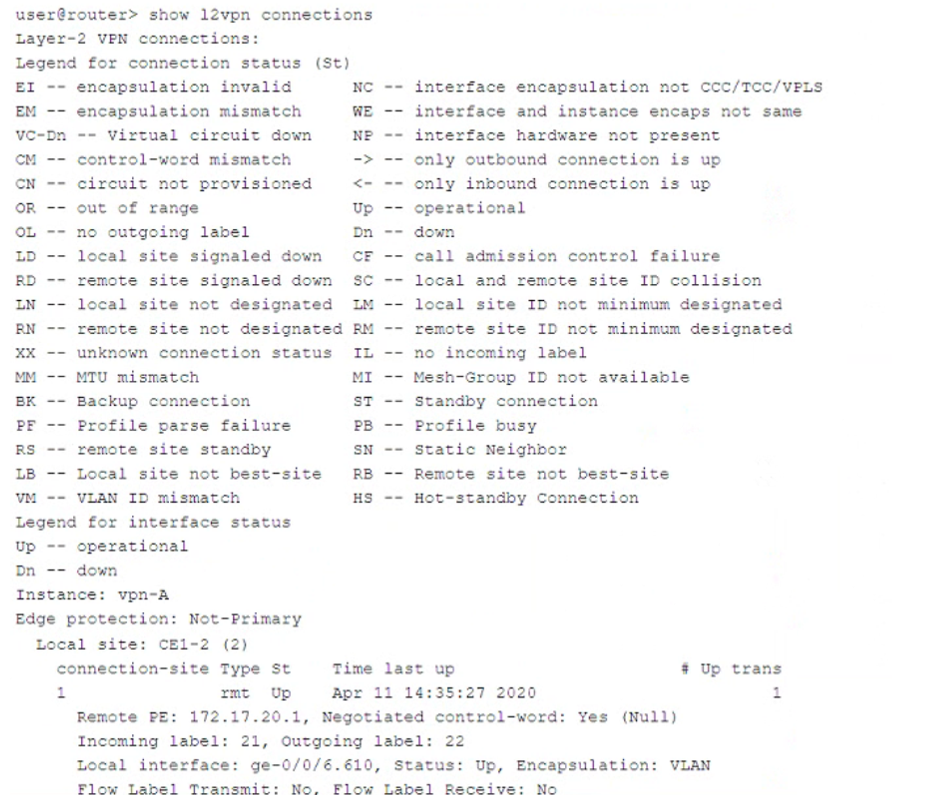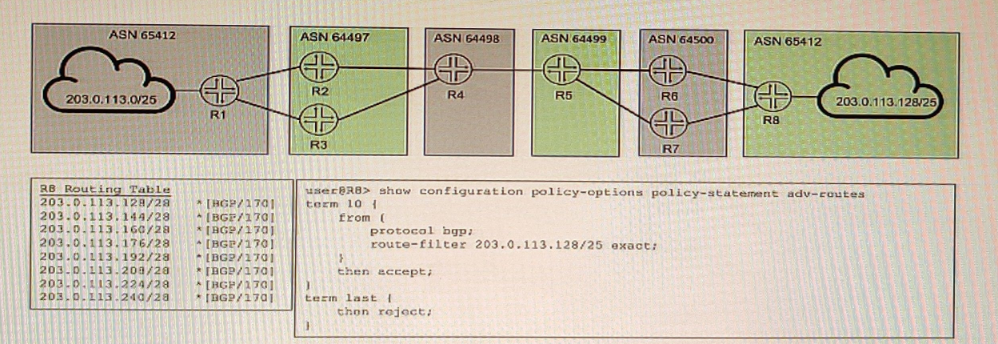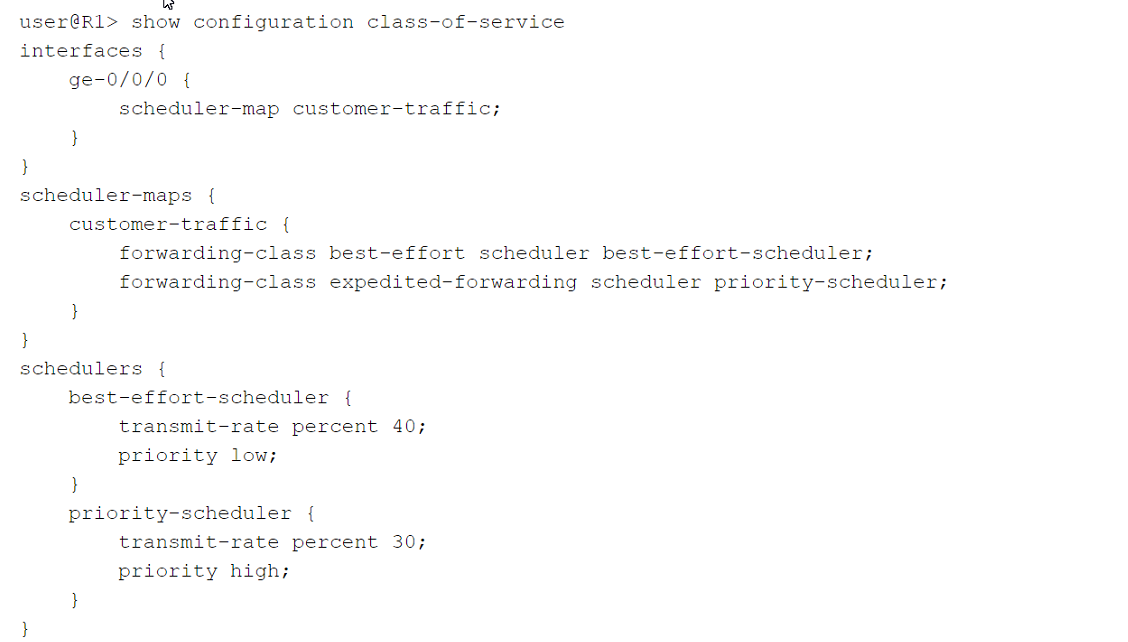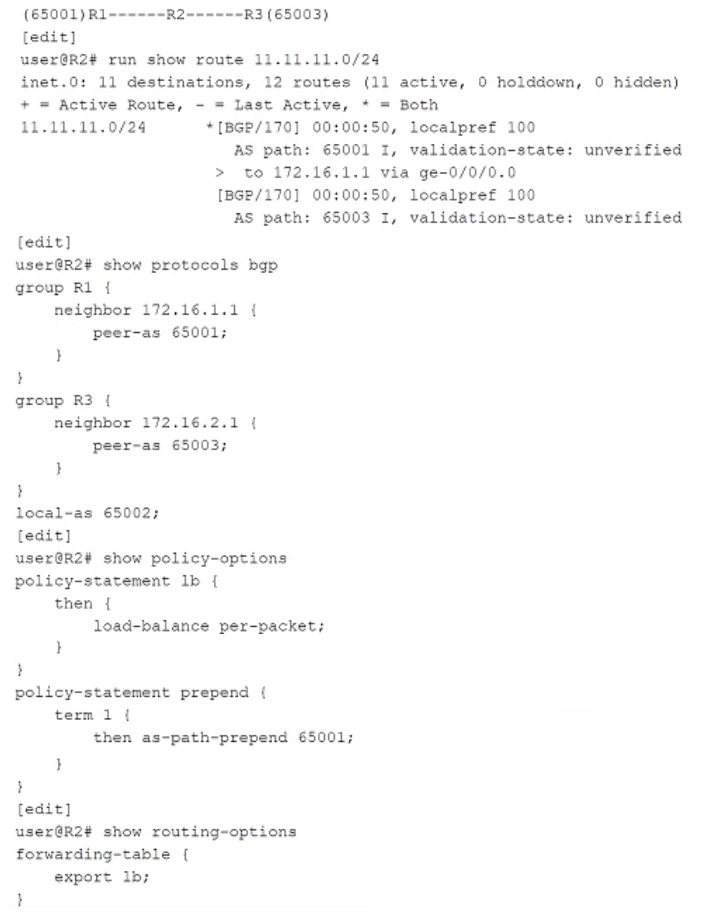Which two statements about the output shown in the exhibit are correct? (Choose two.)
Correct Answer:
A, B
The output is from the show l2vpn connections command on a Juniper router. This command is used to verify the status of Layer 2 VPN (L2VPN) pseudowires between Provider Edge (PE) routers.
Breakdown of Key Information:
Instance: vpn-A
This is the L2VPN instance being monitored.
Connection Status (St)
The connection status is 'Up', meaning the pseudowire is operational.
Local Site: CE1-2 (2)
The PE router is attached to a single local site (CE1-2).
Uptime & Connection Flaps
The output shows the last time the connection was up:
Time last up: Apr 11 14:35:27 2020
The '# Up trans' value is 1, meaning this connection has been established once and has not flapped since it was initiated.
VLAN ID Mismatch Check
The legend includes 'VM -- VLAN ID mismatch', but this status is not present in the connection output.
This means there is NO VLAN ID mismatch.
Flow Labels
The Flow Label Transmit is No, and the Flow Label Receive is No.
This means the PE router does NOT have the capability to pop flow labels.





